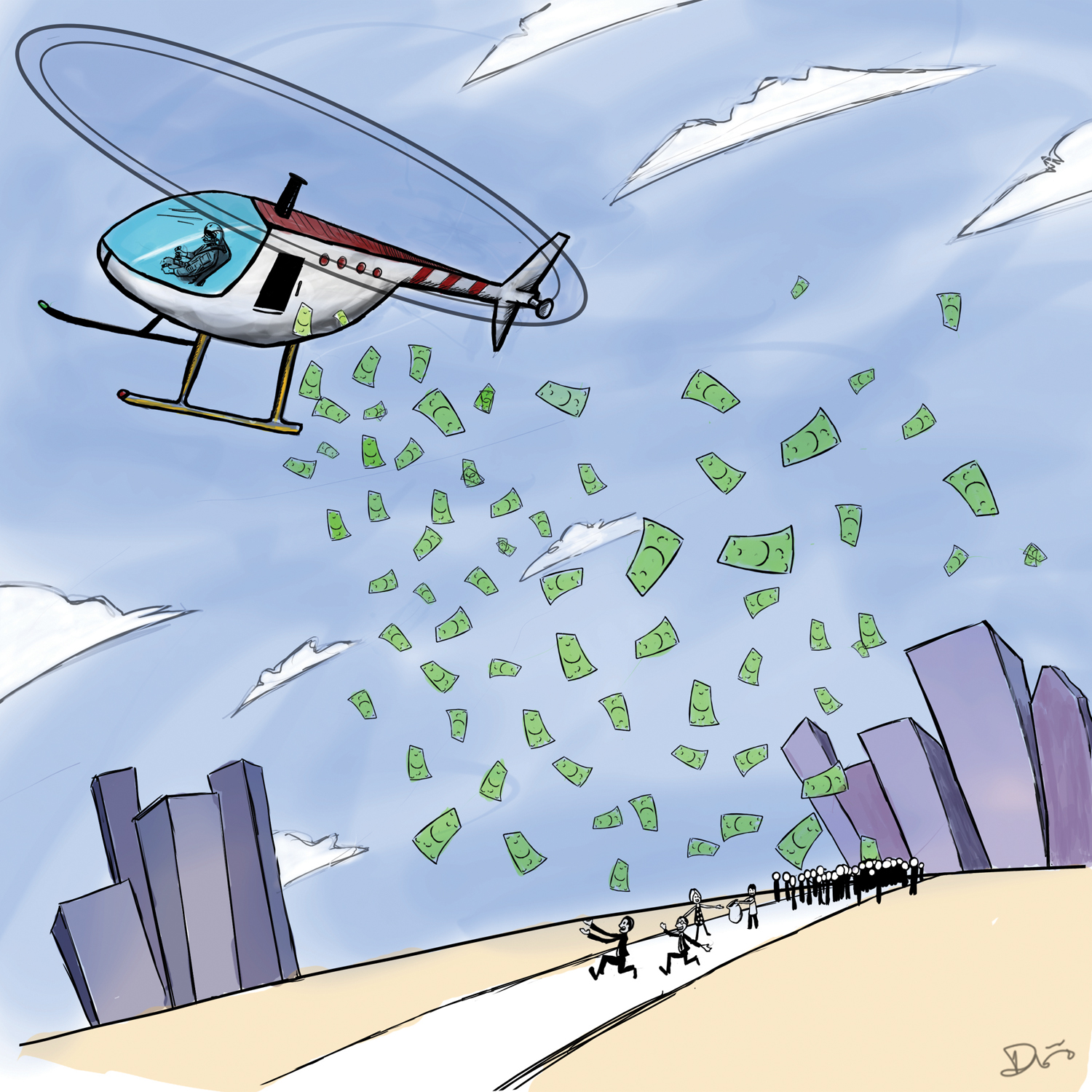A 500,000-rial ($13.3) rise in cash subsidy payments for each Iranian will result in a 6.4% increase in consumer price index the following year, pushing up the inflation rate from 11.2% to 17.6% by the end of the current Iranian year (March 20, 2018).
This was announced by Majlis Research Center in a report titled “Throwing Money at Economy: Basics and Consequences”.
The report is seemingly released to shed light on the consequences of campaign promises made by two presidential candidates, namely Mohammad Baqer Qalibaf and Ebrahim Raeisi. Highlights of the Persian report follow:
Despite their limited fiscal room (the flexibility of a government in spending choices), some governments might be willing to increase their spending well below their potential to serve either economic purposes (e.g. raising inflation and output in the economy), or political objectives (showering their citizens with money and gift to win them over at the time of elections.)
The fiscal deficit created as a result of such measures might be financed through different means, including debt creation by issuing bonds, direct borrowing from the central bank (either quantitative easing or helicopter money), increasing currency rates, raising prices of commodities provided by the governments (namely energy carriers and fuel) or raising tax revenues.
Most of the above approaches, particularly direct programs undertaken by central banks, are examples of throwing money at the economy.
The money borrowed from the central bank could have different effects on the economy, depending on the state of the economy. For example, the consequences of carrying out quantitative easing wherein the central banks buy assets that the government has to pay back are different from helicopter money, which is not an interest-free loan to the government and is in fact a gift.
According to Investopedia, helicopter money implies free and irreversible distribution of money to end-consumers. It can be achieved by literally transferring money to individuals’ accounts for free or by reducing taxes universally to all households enabling more disposable money in their hands.
Such measures are utilized when the economy is facing a slowdown or in recession and interest rates are hovering around zero or even turning negative and the central banks are willing to get higher inflation and stronger growth.
This monetary tool should not be used in countries grappling with high inflation rates or interest rates.
Macroeconomic Populism
Macroeconomic populism is an approach to economics that emphasizes growth and income distribution and deemphasizes the risks of inflation and deficit finance, external constraints and the reaction of economic agents to aggressive non-market policies.
It originally refers to the policies by many Latin American administrations by which government spending and real wages increase in a non-sustainable way leading to inflation, stagflation and ultimately an economic collapse that lowers real wages below the level prevailing before the populist move.
A populist cycle generally follows a stabilization program. The economy has idle capacity and the external balance has room for an expansionary policy.
Phase I includes a high increase in public spending, real wages and employment. Gross domestic product increases and there is low impact on inflation. Shortages are alleviated by imports and there is a reduction in reserves or debt default.
Phase II includes an increase in inflation, although wages rise. Bottlenecks lead to price and exchange controls. The budget deficit increases considerably as a result of subsidies and the economy runs into stagflation.
Phase III is characterized by shortages, extreme acceleration of inflation (possibly hyperinflation) and capital flight. A decline in tax revenue combined with high inflation results in an increase in budget deficit. A stabilization attempt by reducing subsidies and devaluation leads to a drop in real wages. It becomes clear that the government has lost out.
In Phase IV, a new government implements orthodox policies to stabilize the economy. Once the economy is stabilized, real wages will have fallen lower than before Phase I began.
Scenarios for Iran’s Economy
To study the consequences of throwing money, imagine each unit of money injected in to the economy equals 500,000 rials ($13.3) and the government is willing to carry out a plan on a 500-trillion-rial ($13.33 billion) budget deficit.
It needs to be mentioned that the inflationary effect of distributing 500,000 rials per head will depend on where these resources come from.
Choice 1: If the government intends to receive the fund from the Central Bank of Iran, monetary base in the fiscal March 2017-18 will see a 27% rise and this policy alone will bring about an inflationary effect of around 6.4% this year.
In other words, the inflation rate will rise from 11.2% to 17.6%. Given the growth of monetary base and liquidity, the inflationary effect will be significant in the following years.
Choice 2: Increase in energy prices, for example, raises gasoline prices to 27,000 rials (72 cents) a liter from the current 10,000 rials (26 cents) per liter, which translate into a 6.9% rise and an inflation rate of over 18% in 2017-18.
Choice 3: Should the government decide to borrow its needed money from sources other than CBI (such as selling debt bonds), a 5.5% increase in inflation is on the horizon.
Choice 4: If the government raises the currency rate to 61,000 rials per US dollar, inflation will jump by 6.8%.
An average increase in inflation rate is estimated to reach 6.4% in the first year after raising cash subsidies by one unit (500,000 rials).


